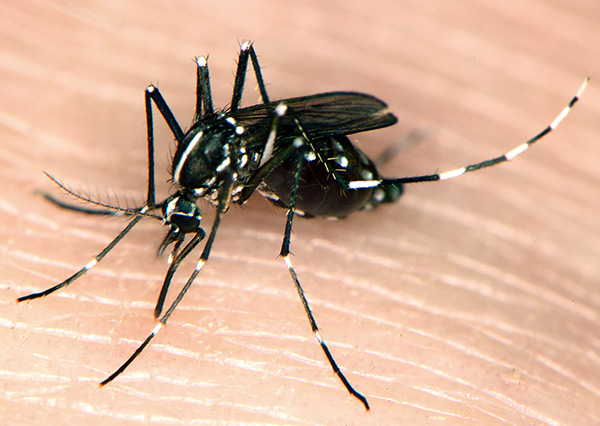Mosquito Study Breeds Better Ways to Fight the Bite
 |
|
Home sweet home for the Asian tiger mosquito, which breeds in containers of water, bites during the day, and likely transmits West Nile virus. Active programs work best for teaching residents ways to manage it. Photo: Paul Leisnham. |
Asian tiger mosquito (ATM), a striped beast that preys on humans during the day, has become the most important nuisance pest in many northeastern urban and suburban areas. Aedes albopictus is found in 30 states and can reproduce in a bottle cap of water, not to mention flowerpots, clogged gutters, rain barrels, and wading pools. And the topper: it likely transmits West Nile virus.
Two hotbeds for ATM complaints are Washington, D.C. and Baltimore, MD. So Paul Leisnham focused his three-year research-extension project there in 2011. Leisnham, an ecologist at the University of Maryland, spearheaded Management of the Asian Tiger Mosquito among Socioeconomically Diverse Urban Neighborhoods through Community-based Education and Involvement.
According to Leisnham, “our work showed that low socioeconomic conditions produced a lot of habitat suited to ATM: large amounts of shaded, medium-small trash containers. Identifying social and environmental factors related to high abundances of water-filled containers is important for predicting where they are likely to be over the course of a summer.” (Interestingly enough, subsequent research revealed that these containers dry out and mosquito production switches during the summer to watered containers in higher socioeconomic neighborhoods).
Scientists know that communities can’t spray for ATM—not just because it’s expensive but because breeding sites are too numerous and diverse. Plus, the sites are often hidden on private property. The most practical solutions would be for residents to drain and remove small water-holding containers and to apply a biorational insecticide (mosquito dunk) to large amounts of standing water. But how to teach and motivate them?
Leisnham’s team visited 240 study households and once in the first two years distributed ATM print educational material to 50% of them. “Over half of the surveyed residents who received materials reported never reading them,” stated Leisnham. “Print education appears limited in its impact, is unlikely to be an effective intervention for most communities, and costs money.”
 |
|
The Asian tiger mosquito, named for its striped legs, breeds in outdoor containers of water, bites during the day, and likely transmits West Nile virus. Active programs work best for teaching residents ways to manage it. Photo: Susan Ellis, Bugwood.org. |
More effective at reducing mosquito infestations in urban areas were active educational programs: articles in community newsletters; information tables at neighborhood events; workshops; citizen science (where participants collect mosquito data); community representatives who sampled for mosquitoes and disseminated information to residents; and a church youth group’s container cleanup program.
“Even with the additional efforts,” admitted Leisnham, “we found getting community buy-in challenging.” But he believes developing long-term relationships with communities to establish trust and garner wide visibility have the greatest chance for success.
Leisnham leveraged his three-year $124,174 RIPM grant to garner $1.4 million through NSF’s Dynamics of Coupled Natural and Human Systems Program.
— by CARRIE KOPLINKA-LOEHR
